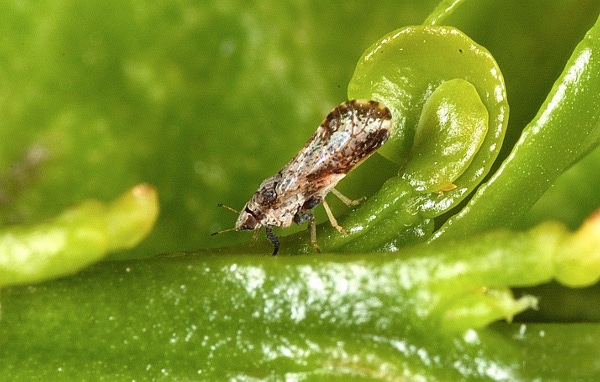
Psyllid find at Arizona border stirs concern
Detection of a live Asian citrus psyllid (ACP) Jan. 4 at the international border station at Nogales, Ariz. is yet another sign that the ACP-vectored Huanglongbing (HLB) disease could enter the U.S. through a check point.Border agents found the psyllid in fresh citrus leaves declared by a traveler coming from Mexico into Arizona.USDA National Identification Services confirms insect as an ACP - not yet known if the insect carried HLB.

The detection of a live Asian citrus psyllid (ACP) Jan. 4 at the Mariposa Port of Entry international border station at Nogales, Ariz., is yet another sign that the ACP-vectored Huanglongbing (HLB) disease could enter the U.S. through a check point.
U.S. Customs and Border Protection (CBP) found the psyllid in fresh citrus leaves declared by a traveler coming from Mexico into Arizona. The traveler planned to make medicinal tea from the leaves.
The psyllid was sent to USDA National Identification Services which confirmed the insect as an ACP. It is not yet known if the insect carried HLB.
“Interceptions like this are extremely important,” said Port Director Guadalupe Ramirez. “Finding and stopping pests such as these can prevent untold damage to our domestic agriculture and our economy.”
The ACP is the primary vector of HLB, a devastating disease that kills citrus trees and makes the fruit unmarketable. HLB has devastated commercial citrus production in Florida and in other major citrus-producing countries worldwide.
“It’s important not to carry citrus (across the border),” said John Caravetta, associate director of the Arizona Department of Agriculture (ADA). “We have to be very careful on the movement of these articles.”
Caravetta has no plan to establish an ADA psyllid quarantine in the Nogales area since the find was an interception of the pest, not an area where the pest had become established.
The psyllid, but not the disease, has been found in Yuma County in Arizona. California counties with the psyllid (but no HLB) include San Diego, Imperial, Los Angeles, Orange, and Ventura.
“The quarantines are in place to restrict the movement of this pest and to preserve our commercial and residential citrus,” Caravetta said. “We need to be vigilant and make sure that we don’t move citrus and citrus commodities without the appropriate safeguards outside of those areas.”
HLB is found in several areas of Mexico. The latest find was an adult psyllid carrying the disease about 350 miles south of the Mexico-Arizona border in a commercial citrus area.
“This is a reminder to everyone that we are under pressure from areas, like Mexico, that have the psyllid and citrus greening,” Caravetta explained. “It is certainly closer than anyone is comfortable with and the pest has been making a progression up the western side of Mexico. Those distances continue to narrow.”
About the Author(s)
You May Also Like





